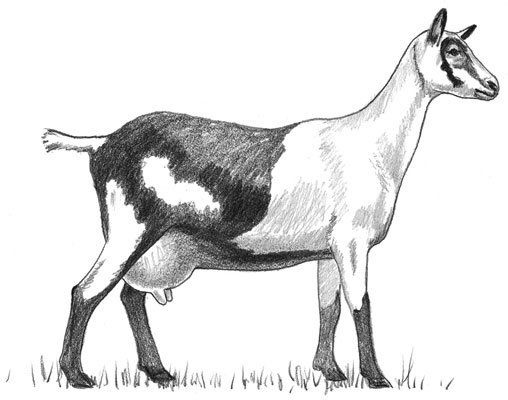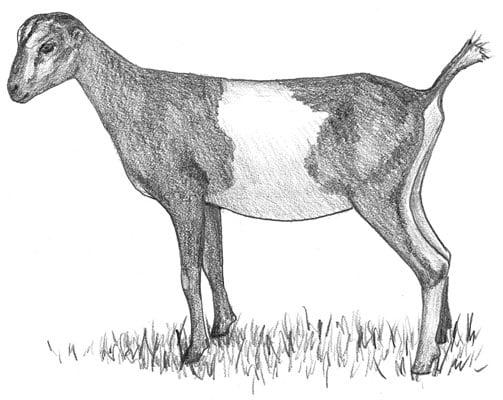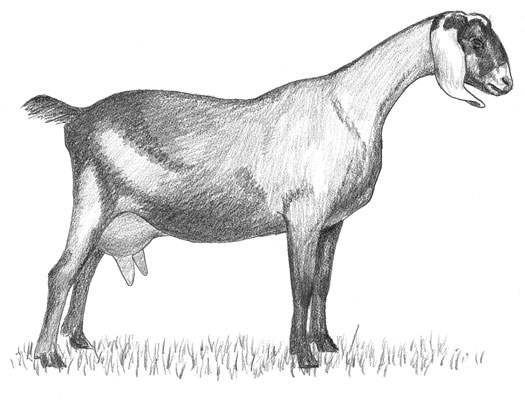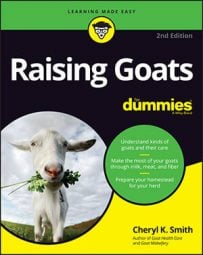When choosing goats to raise as part of a green lifestyle, you must consider your needs and circumstances to choose the right breed. The standard breeds are a good choice if you want dairy goats that produce a lot of milk and you have the space. If you think you want standard dairy goats, deciding which one is for you depends mainly on size, the look, and the personality that strikes your fancy:
Alpine: Alpines, also known as French Alpines, are large goats with erect ears and come in a variety of colors and patterns. They’re friendly and hardy, and the wethers are a favorite for use as pack animals. Many goat milk dairies have Alpines in their milking string because they consistently produce a lot of milk.
 An Alpine goat
An Alpine goatLaMancha: LaManchas look earless, but they actually have very small ears. The ears are of two types: gopher ears and elf ears. Gopher ears are very small and rounded; elf ears are less than two inches long and turn up or down. People tend to either love or hate the look of the LaMancha. They come in a variety of colors and patterns and are very friendly.
 A LaMancha goat with gopher ears
A LaMancha goat with gopher earsNubian: Nubians are one of the most popular breeds. They have long, floppy ears and a rounded (Roman) nose, and they have been bred to be very large. Their milk has a high butterfat content, and they produce a lot of it — which makes them a good choice if you want to make cheese. Because of their large size, they make good meat goats, too.
Unfortunately, Nubians also are known for the loud, annoying cries that make them undesirable in some neighborhoods and on some farms.
 A Nubian goat
A Nubian goatOberhasli: Oberhaslis were originally known as Swiss Alpines, a variation on the Alpine. They were eventually recognized as a separate breed with distinct markings. They have erect ears, are medium-sized, and have a reddish-brown color (chamoisee) with black markings on their backs, belly, tail, and legs. Does can also be pure black. They have a sweet temperament and seem to like being milked.
Saanen and Sable: Saanens are white or off-white in color and are the largest of the standard dairy goats. Sables are Saanens that aren’t white, due to a recessive gene. They have erect ears, like the Alpine, and are usually mellow and easy-going.
Sables and Saanans are known for their high milk production and are therefore often used in commercial dairies. A downside to Saanens is that their white coats show dirt and also make them more prone to sunburn.
Toggenburg: Toggenburgs, also referred to as Toggs, are beautifully marked and range in color from fawn to chocolate brown with white markings. They resemble a medium-sized Alpine in body shape, with erect ears. Toggs produce a moderate amount of milk but are known for long lactations. Their milk has a low butterfat content and doesn’t taste as rich as some of the other goats’ milk.

